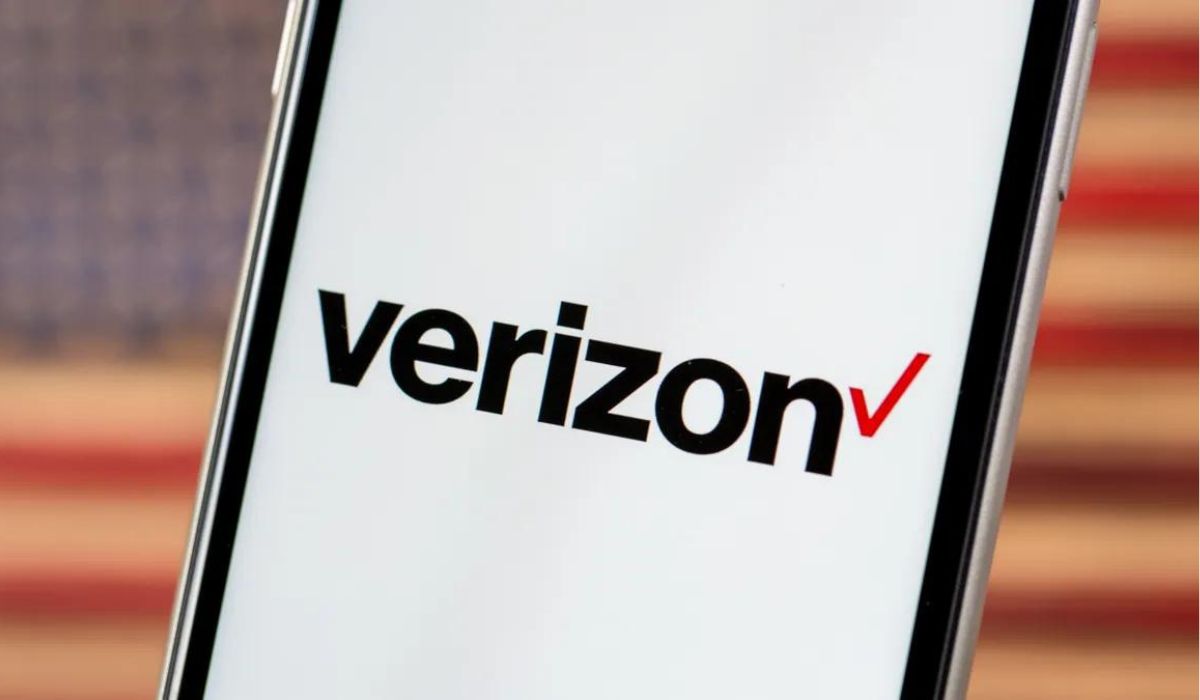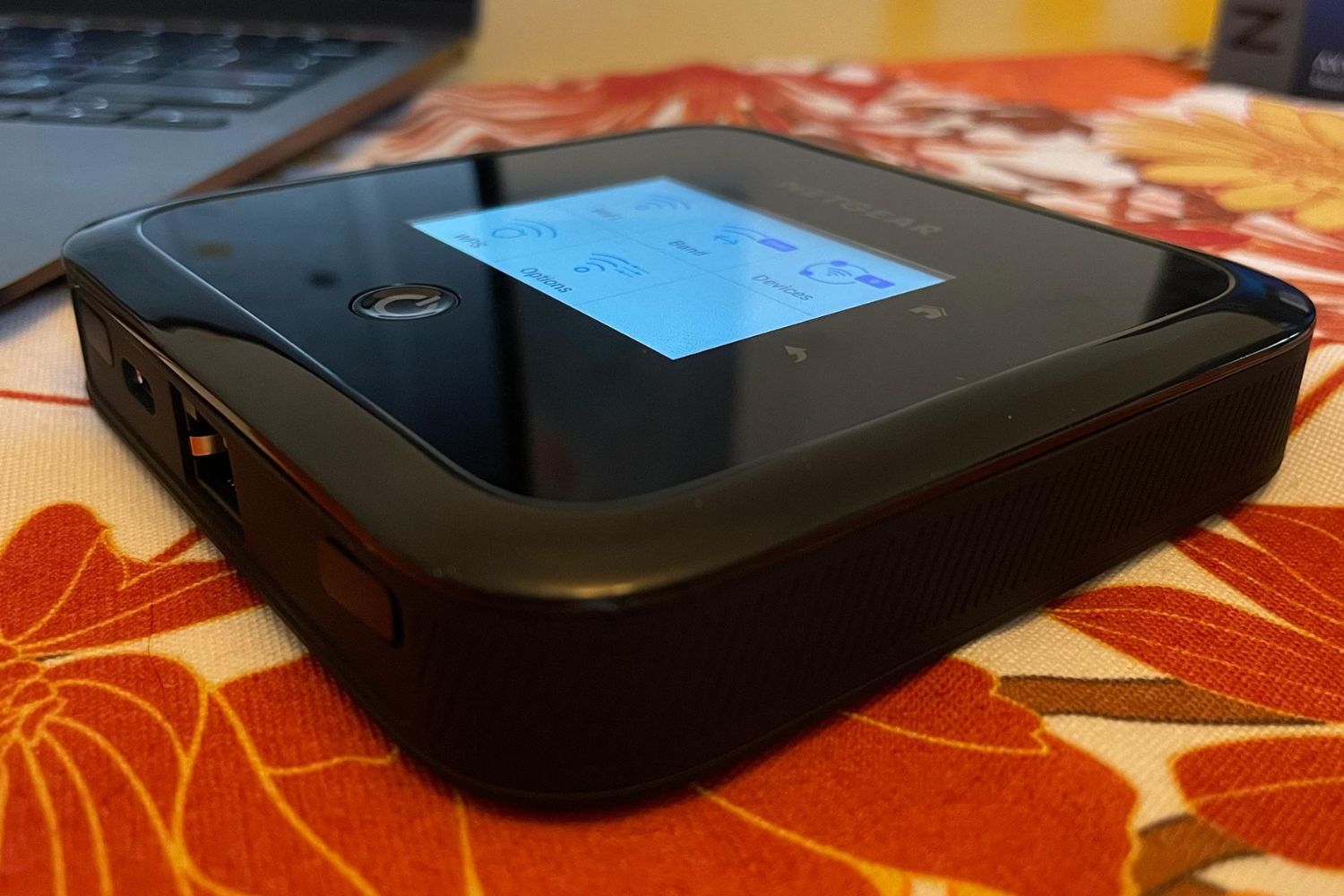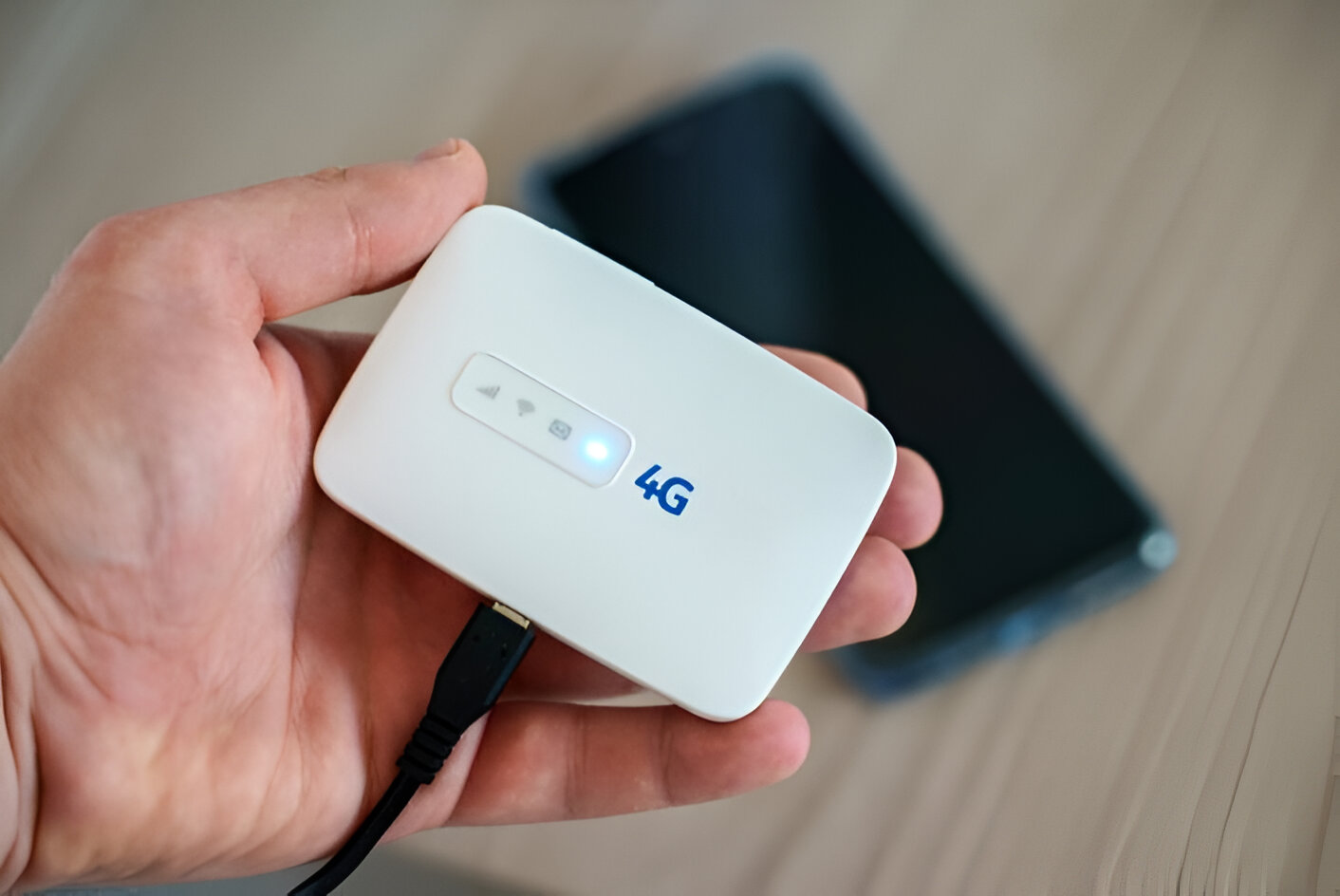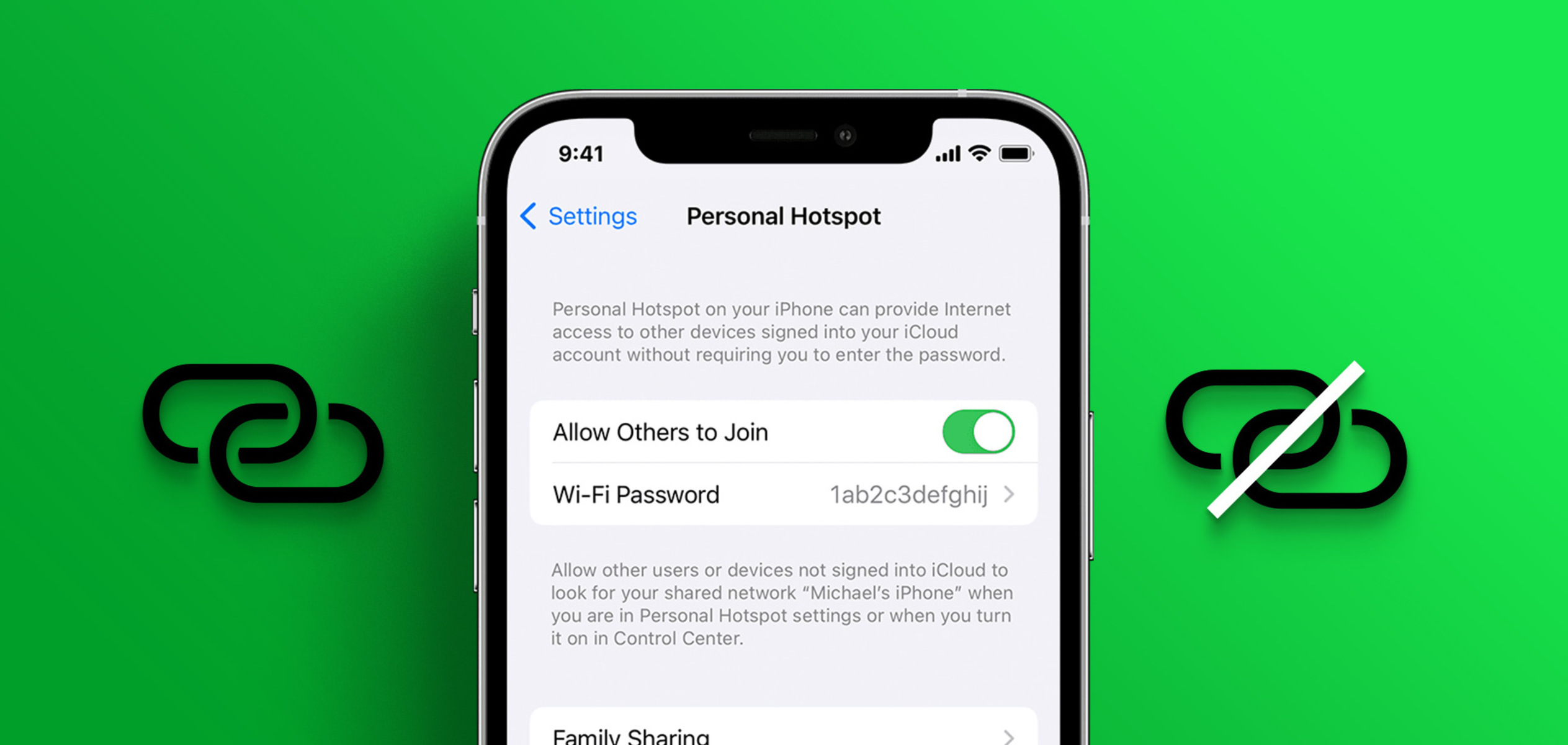Introduction
In today's fast-paced world, staying connected is not just a convenience but a necessity. Whether you're at a bustling coffee shop, a vibrant airport, or a cozy hotel, the availability of public Wi-Fi hotspots has become ubiquitous. These hotspots offer a lifeline for individuals seeking to stay connected, catch up on work, or simply unwind with a dose of digital entertainment. However, amidst the convenience of these hotspots, there exists a lesser-known factor that can impact users' experience – the hotspot connection limit.
Understanding the nuances of hotspot connection limits is crucial for both users and hotspot providers. It can influence the quality of the connection, the overall user experience, and the efficient management of network resources. By delving into the intricacies of hotspot connection limits, we can gain valuable insights into why they exist, how they function, and how they can be effectively managed to optimize the user experience.
As we embark on this journey to comprehend hotspot connection limits, we'll explore the reasons behind their implementation, the technical aspects that govern their operation, and the strategies for effectively managing these limits. By the end of this exploration, you'll be equipped with a comprehensive understanding of hotspot connection limits, empowering you to navigate the digital landscape with confidence and insight. Let's unravel the complexities and demystify the world of hotspot connection limits, shedding light on their significance and the strategies for managing them effectively.
What is a Hotspot Connection Limit?
A hotspot connection limit refers to the maximum number of simultaneous connections allowed on a Wi-Fi hotspot. Essentially, it dictates the maximum number of users who can access the hotspot's network at any given time. This limit is a crucial factor in determining the overall performance and user experience of the hotspot.
Hotspot connection limits are typically imposed by the network administrators or the providers of the Wi-Fi hotspot. These limits are put in place to ensure that the network resources are efficiently utilized and that the quality of service is maintained for all users. By restricting the number of concurrent connections, hotspot providers can prevent network congestion, minimize latency, and optimize the overall performance of the network.
The connection limit is often set based on the capacity of the hotspot's infrastructure, including the available bandwidth, router capabilities, and the overall network capacity. It is a carefully calibrated parameter designed to strike a balance between accommodating a reasonable number of users and ensuring a seamless and reliable connection for each user.
From a user's perspective, the hotspot connection limit directly impacts their ability to connect to the network and enjoy a smooth and uninterrupted online experience. When the maximum connection limit is reached, new users attempting to join the hotspot may encounter difficulties in establishing a connection or experience sluggish network performance due to the strain on the available resources.
Understanding the concept of hotspot connection limits is essential for both users and hotspot providers. Users can benefit from being aware of these limits to manage their expectations and plan their network usage accordingly. On the other hand, hotspot providers must carefully consider and configure the connection limits to strike a balance between accommodating multiple users and maintaining a high-quality network experience.
In the next sections, we will delve deeper into the reasons behind the implementation of hotspot connection limits, the technical aspects governing their operation, and effective strategies for managing these limits to optimize the user experience. Let's unravel the complexities of hotspot connection limits and gain valuable insights into their significance and management.
Why Do Hotspots Have Connection Limits?
Hotspots have connection limits for several compelling reasons, each aimed at ensuring an optimal user experience and efficient network management. Let's explore the key motivations behind the implementation of connection limits on Wi-Fi hotspots:
-
Resource Allocation: Hotspots operate within a finite resource environment, including bandwidth, router capacity, and overall network infrastructure. By imposing connection limits, hotspot providers can allocate these resources judiciously, preventing overutilization and ensuring a consistent and reliable network performance for all users. This proactive resource management helps in mitigating network congestion and maintaining a satisfactory quality of service.
-
Network Stability: Overloading a Wi-Fi hotspot with an excessive number of concurrent connections can lead to network instability and degraded performance. Connection limits act as a safeguard against network instability by preventing the network from becoming overwhelmed with traffic. This ensures that each user experiences a stable and responsive network connection, free from excessive latency or disruptions.
-
Quality of Service: Hotspot connection limits are instrumental in upholding the quality of service for users. By restricting the number of simultaneous connections, hotspot providers can safeguard the overall user experience, ensuring that each connected device enjoys a reasonable share of the available network resources. This approach prevents scenarios where an influx of users leads to a deterioration in network performance, ultimately preserving the quality of service for all users.
-
Security and Privacy: Limiting the number of concurrent connections on a hotspot can contribute to enhancing the security and privacy of the network. By managing the volume of connected devices, hotspot providers can mitigate potential security risks and unauthorized access attempts. This proactive measure helps in safeguarding the integrity of the network and protecting the privacy of users' data and communications.
-
Regulatory Compliance: In certain jurisdictions, there are regulatory requirements and industry standards that mandate the implementation of connection limits on public Wi-Fi hotspots. Adhering to these regulations is essential for hotspot providers to ensure legal compliance and uphold the security and integrity of their networks.
In essence, hotspot connection limits are a strategic mechanism for maintaining network stability, optimizing resource allocation, safeguarding the quality of service, and upholding security and regulatory compliance. By understanding these underlying reasons, both users and hotspot providers can appreciate the significance of connection limits and work towards maximizing the efficiency and reliability of public Wi-Fi hotspots.
Understanding Hotspot Connection Limits
Hotspot connection limits are pivotal in shaping the user experience and network performance within public Wi-Fi hotspots. These limits are meticulously designed to regulate the number of simultaneous connections, thereby influencing the overall accessibility, speed, and stability of the network. To comprehend the intricacies of hotspot connection limits, it is essential to delve into the technical and operational aspects that underpin their functionality.
Technical Considerations
The establishment of hotspot connection limits involves a careful evaluation of the underlying technical infrastructure. Factors such as available bandwidth, router capacity, and network traffic patterns play a pivotal role in determining the optimal connection limit. Network administrators and hotspot providers meticulously analyze these technical parameters to strike a balance between accommodating multiple users and maintaining a responsive and reliable network environment.
User Experience Implications
From a user's perspective, the connection limit directly influences their ability to seamlessly connect to the hotspot and enjoy a consistent network experience. When the maximum connection threshold is reached, new users may encounter challenges in establishing a connection or may experience diminished network performance due to the strain on available resources. Understanding these implications empowers users to manage their network usage effectively and adjust their expectations based on the prevailing connection limits.
Network Resource Optimization
Hotspot connection limits serve as a mechanism for optimizing network resources and mitigating the risk of congestion. By restricting the number of concurrent connections, hotspot providers can ensure that each user receives a reasonable share of the available bandwidth and network capacity. This approach fosters an equitable distribution of resources, preventing scenarios where an excessive number of users leads to a degradation in network performance for all connected devices.
Scalability and Flexibility
The configuration of hotspot connection limits must also account for scalability and flexibility to accommodate fluctuating user demands. This involves implementing dynamic connection limit management strategies that can adapt to variations in network usage patterns. By leveraging scalable connection limits, hotspot providers can effectively address surges in user activity without compromising the overall network performance and user experience.
Proactive Network Management
Beyond its immediate impact on user connectivity, hotspot connection limits play a pivotal role in proactive network management. By preemptively regulating the number of concurrent connections, network administrators can maintain network stability, minimize latency, and preempt potential issues stemming from overutilization. This proactive approach fosters a reliable and responsive network environment, enhancing the overall user satisfaction and experience.
In essence, understanding hotspot connection limits entails a comprehensive grasp of the technical underpinnings, user experience implications, resource optimization, scalability, and proactive network management. By assimilating these insights, both users and hotspot providers can navigate the digital landscape with heightened awareness and strategic network utilization, ultimately fostering an environment of seamless connectivity and optimal network performance.
Managing Hotspot Connection Limits
Effectively managing hotspot connection limits is paramount for ensuring a seamless and reliable network experience for users while optimizing the utilization of network resources. This entails the implementation of strategic measures and proactive strategies to accommodate user demands, maintain network stability, and uphold the quality of service. Let's delve into the key aspects of managing hotspot connection limits:
Dynamic Threshold Adjustment
One of the fundamental approaches to managing hotspot connection limits involves the dynamic adjustment of the connection threshold based on real-time network usage patterns. By leveraging intelligent network management systems, hotspot providers can dynamically scale the connection limit to adapt to fluctuating user demands. This agile approach allows for the efficient allocation of network resources, ensuring that the connection limit aligns with the prevailing user activity levels.
User Prioritization Mechanisms
Implementing user prioritization mechanisms enables hotspot providers to allocate network resources judiciously, particularly during periods of high user traffic. By categorizing users based on specific criteria such as subscription tier or usage patterns, providers can allocate connection slots in a manner that prioritizes premium users while ensuring equitable access for all. This approach enhances the overall user experience and fosters a fair distribution of network resources.
Transparent Communication
Transparently communicating the connection limits to users is essential for managing expectations and promoting informed network usage. Hotspot providers can convey the connection limits through intuitive signage, digital notifications, or dedicated network portals. By proactively informing users about the connection limits and providing insights into the rationale behind these limits, providers can cultivate understanding and cooperation among users, ultimately contributing to a harmonious network environment.
Automated Load Balancing
Leveraging automated load balancing mechanisms enables hotspot providers to dynamically distribute network traffic across access points and channels, effectively managing the impact of connection limits. By intelligently redistributing user connections based on network utilization and access point availability, providers can mitigate the strain on individual hotspots, optimize network performance, and circumvent potential connectivity challenges arising from reaching the connection limit.
Scalable Infrastructure Investments
Investing in scalable network infrastructure is instrumental in effectively managing hotspot connection limits in the long term. By expanding the capacity of the network through the deployment of additional access points, enhanced router capabilities, and increased bandwidth, providers can accommodate a larger number of concurrent connections without compromising network performance. This proactive infrastructure investment aligns with the evolving demands of users and ensures a robust network environment.
In essence, managing hotspot connection limits encompasses a multifaceted approach that encompasses dynamic threshold adjustments, user prioritization, transparent communication, automated load balancing, and scalable infrastructure investments. By integrating these strategic measures, hotspot providers can optimize the user experience, maintain network stability, and foster a harmonious and reliable network environment.
Conclusion
In conclusion, hotspot connection limits play a pivotal role in shaping the user experience and network performance within public Wi-Fi hotspots. By understanding the underlying reasons for their implementation, the technical considerations governing their operation, and the strategies for effective management, both users and hotspot providers can navigate the digital landscape with heightened awareness and strategic network utilization.
The imposition of connection limits is driven by the imperative to optimize resource allocation, maintain network stability, safeguard the quality of service, and uphold security and regulatory compliance. These fundamental motivations underscore the significance of connection limits in fostering a reliable and seamless network environment for users.
From a technical standpoint, hotspot connection limits are intricately tied to factors such as available bandwidth, router capacity, and network traffic patterns. Understanding these technical considerations empowers hotspot providers to calibrate connection limits that strike a balance between accommodating multiple users and preserving a responsive and reliable network environment.
Effective management of hotspot connection limits involves dynamic threshold adjustments, user prioritization mechanisms, transparent communication, automated load balancing, and scalable infrastructure investments. By integrating these strategic measures, hotspot providers can optimize the user experience, maintain network stability, and foster a harmonious and reliable network environment.
As users, being cognizant of hotspot connection limits enables us to manage our network usage effectively, adjust our expectations based on prevailing connection limits, and contribute to a cooperative and informed network environment.
In essence, hotspot connection limits are not merely technical parameters but integral components that shape the accessibility, speed, and stability of public Wi-Fi hotspots. By unraveling the complexities of hotspot connection limits and embracing proactive management strategies, we can collectively contribute to an environment of seamless connectivity and optimal network performance, ultimately enhancing the digital experience for all users.

























